
Noah Medical’s Galaxy robotic bronchoscopy system has advanced imaging for real-time location updates of potentially cancerous lesions. [Image courtesy of Noah Medical]
But the brightest star in the Galaxy system isn’t that disposable, robotic scope, but rather Noah Medical’s tool-in-lesion tomosynthesis (TiLT) technology, designed to help surgeons retrieve samples that will provide a definitive answer from the pathology lab.
Medical Design & Outsourcing spoke with Noah Medical VP of Engineering John Shen to learn more about how the system works, how it was developed, and potential applications of the technology.

Noah Medical VP of Engineering John Shen [Photo courtesy of Noah Medical]
Noah Medical’s engineering challenges
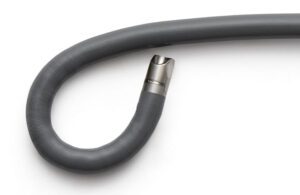
The Noah Medical Galaxy system’s robotic bronchoscope [Photo courtesy of Noah Medical]
“I couldn’t even tell you how many different designs we had … to get a scope [with] the right balance between cost, performance, manufacturability and all the rest. {How} we tackled that was a tight iterative loop between design, engineering and our clinical team so we could very rapidly develop versions of the scope, try them clinically, assess them against a set of metrics that we had developed and then iterate and continue to change. That’s what got us to the design that we have today.”
The scope has a camera and a single LED light integrated into a tip module. The scope’s 2.1 mm working channel is sized to accommodate any off-the-shelf biopsy tool.
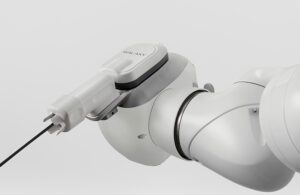
Noah Medical’s robotic bronchoscope attaches to this robotic arm. [Photo courtesy of Noah Medical]
Noah Medical’s TiLT technology
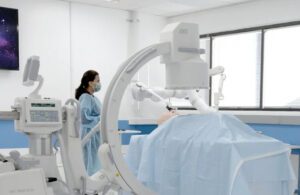
Noah Medical’s TiLT technology scans a patient in real-time using a C-arm. [Photo courtesy of Noah Medical]
“Because you’ve done a TiLT sweep, you know exactly where it is, and then you can put your needle in it and do a biopsy under augmented fluoro that actually draws an augmented reality display of [the lesion’s location] even if you can’t see the lesion,” Shen said.
The TiLT board consists of metal beads arranged in a pattern underneath the patient, providing a reference to help provide 3D positioning from 2D imaging.
“In the end, it is an image-processing challenge. We’re writing algorithms to pull a 3D image out of the stack of 2D images, and as the algorithms get more advanced and as we try and drive up the quality, you have all of your standard kinds of image processing algorithms that you might apply,” Shen said. “And then you can get into more exotic things, using AI or machine learning techniques to try and infer data to make the picture look more realistic and a better experience for the physician.”
Shen said work continues on image processing, but at this point, the technology allows physicians to target lesions quickly, safely and effectively. Noah Medical just released first-in-human study data showing 100% navigation success and tool-in-lesion confirmation, with a diagnostic yield between 89.5% and 94.7%.
“We’re really looking to see how far we can push this. … So far, the results are encouraging, but we’re just at the beginning of the journey,” Shen said.
To accelerate speed to market and focus on innovating new technology to compete, Noah Medical used off-the-shelf components such as the robotic arm.
“The TiLT technology is really the big differentiator of the system,” Shen said. “It’s a software feature that relies on a few hardware elements, but a lot of the rest of it — even the robotics itself — is all secondary. All of those things are just getting you to where you’re in the area for a TiLT sweep and figuring out exactly where the lesion is. … If you were to take apart our system, you would find a good mix off-the-shelf stuff. Where there’s true value to be added is our custom technology, both hardware and software.”
What’s next for Noah Medical
![An illustration showing Noah Medical's Galaxy system taking a biopsy of a lesion. [Illustration courtesy of Noah Medical]](https://www.medicaldesignandoutsourcing.com/wp-content/uploads/2023/09/Noah-Medical-Galaxy-lesion-biopsy-illustration-300x195.jpg)
An illustration showing Noah Medical’s Galaxy system taking a biopsy of a lesion. [Illustration courtesy of Noah Medical]
Shen said during our August interview that at least three healthcare systems were already using Galaxy: the University of Chicago, Inova Fairfax in Virginia, and Prisma Health in South Carolina.
Another system that will soon use Noah Medical’s Galaxy system — if it isn’t already — is Chatanooga, Tennesee-based CHI Memorial, the largest user by volume of the competing Intuitive Ion system, Shen said.
“It’s certainly exciting that they’re giving us a chance to show what we have,” he said.
Noah Medical’s technology could one day be used for other indications in the lungs and elsewhere in the body.
“Having just launched Galaxy in this indication, this is really our main focus, but the foundational technology is certainly applicable in a lot of other areas. … We are focused on endoluminal applications, so any kind of structure where you have a lumen and either a diagnostic or therapeutic application is certainly in play. Within the lung space itself, there are plenty of other procedures where this could be applicable. In the future, people are looking at therapeutics for lung cancer. That’s a little bit in the future, but certainly something that is exciting.”




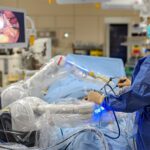
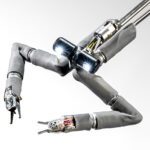
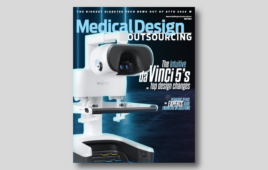


![A photo of the Medtronic GI Genius ColonPro polyp detection system flagging a potential sign of colon cancer during a colonoscopy. [Photo courtesy of Medtronic]](https://www.medicaldesignandoutsourcing.com/wp-content/uploads/2024/04/Medtronic-GI-Genius-doctors-268x170.jpg)